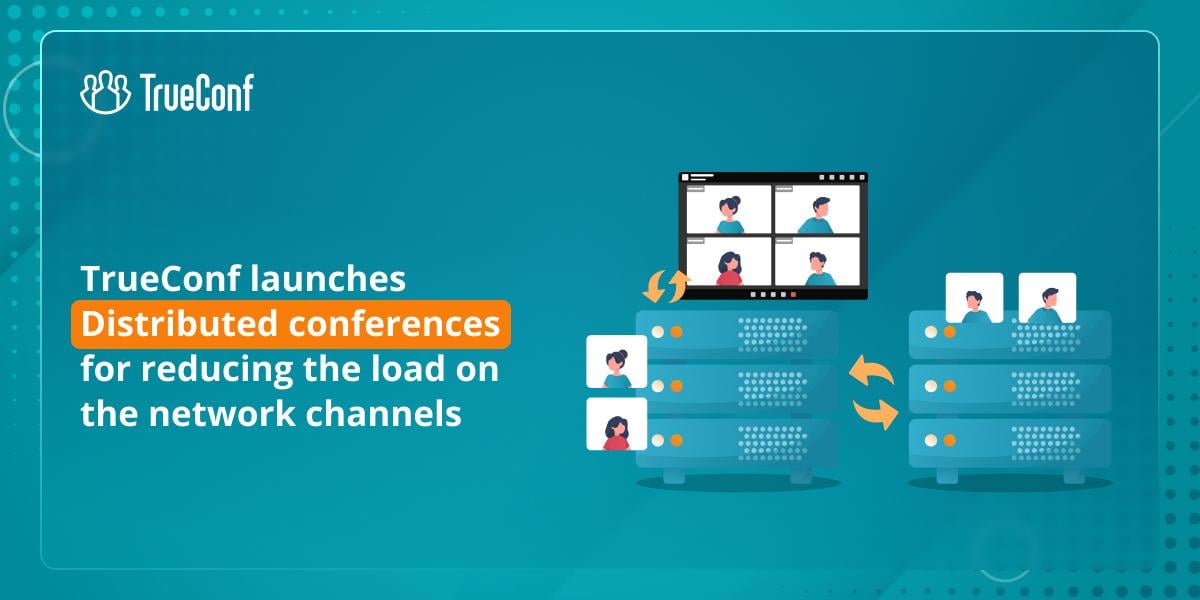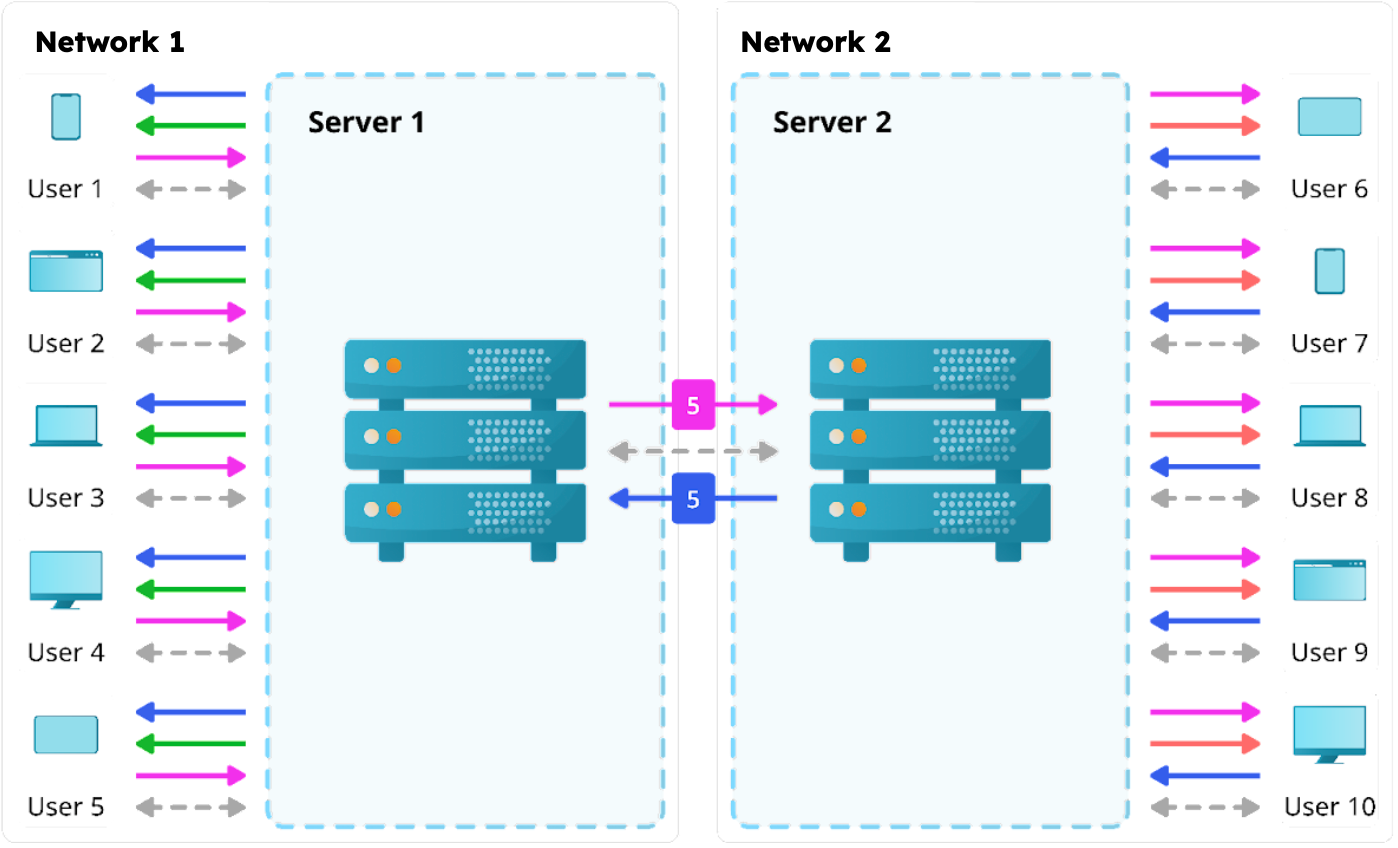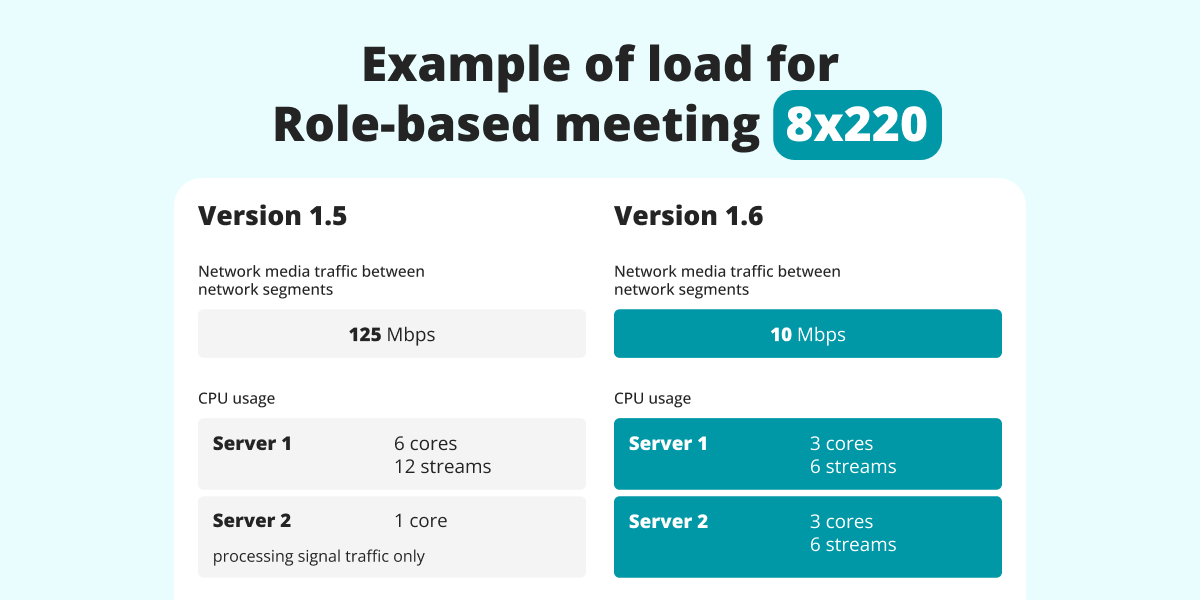
TrueConf introduced Distributed conferences, a groundbreaking technology which allows significantly reducing the load on network channels and server CPUs in the company’s video conferencing infrastructure, as well as increasing the number of active participants in each online meeting — up to 2,000. The technology will be available in TrueConf Enterprise 1.6.
The analysts suggest the video conferencing market is set to escalate from $33.04 billion in 2024 to $60.17 billion by 2032. This increase is driven by the growing requirement of video collaboration by businesses and organizations, aiming to streamline the working process and digitalize events and presentations. In accordance with this, the number of video conferences is also on the rise, reflecting the mounting demand.
To optimize the operation of the corporate video conferencing systems in large enterprises with numerous geographically distributed branches and employees, TrueConf has developed a technology which allows reducing the load on network channels during video conferences with many participants from different locations.
The technology was developed on the secure proprietary protocol used in the TrueConf ecosystem. It will be available in TrueConf Enterprise 1.6, a scalable solution that provides unlimited collaboration and corporate communications capabilities for companies with a large number of branches and employees.
In the infrastructure of such entities, TrueConf Enterprise usually integrates multiple autonomous video collaboration systems spread across various locations. Each system allows employees to leverage team messaging, video conferencing, and collaboration tools, as well as facilitates seamless interaction using a corporate address book.
Earlier, when hosting a conference that incorporated users from several geographically distributed autonomous TrueConf instances, the participants connected directly to the video conferencing server where the meeting was held and loaded its network channel and central processor.
The new TrueConf technology gives a completely different look at common processes: now, when joining the conference, participants automatically connect to the systems on which they are authorized, and only video conferencing servers exchange media streams. Thus, load distribution occurs and the requirement for an outgoing network channel is reduced.
As a result, the load on the outgoing channel of the meeting host’s server will be minimized by 10-20 times. For example, when 2,500 employees authorized in different video conferencing systems in the corporate network participated in simultaneously running conferences, the load on the network channel was about 1 Gbit/s. Distributed conferences require about 125 Mbit/s in the same scenario.

The technology will allow enterprises to enhance the efficiency of corporate video collaboration platforms and the number of simultaneous video conferences, as well as to release network resources for other services and purposes. In addition, this will increase the number of active participants in video meetings to 2,000.
For more information, please contact:
Dmitry Odintsov,
TrueConf’s CEO
Phone: +1 (833) 878-32-63
Email: pr@trueconf.com
About TrueConf, www.trueconf.com
TrueConf equips desktops, mobiles, and meeting rooms with award-winning video collaboration capabilities and provides businesses worldwide with exceptional meeting experiences. TrueConf apps and solutions are easy to use and are fully compatible with legacy SIP/H.323 equipment, enabling customers to save money on infrastructure while still utilizing state-of-the art technologies such as scalable video coding (SVC) and intelligent stream manipulation.







